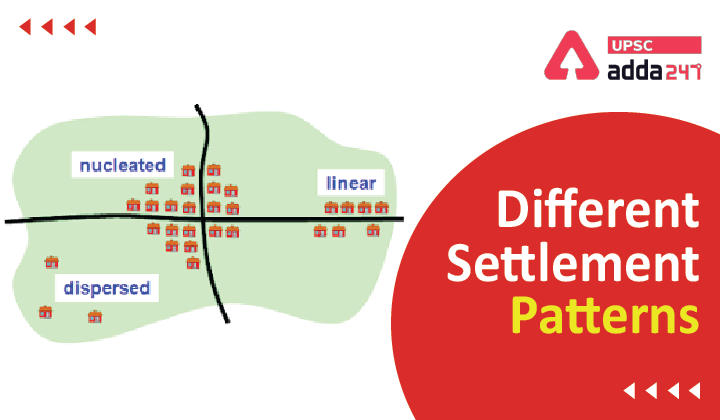Table of Contents
What is a settlement pattern?
- A settlement pattern refers to the way that buildings and houses are distributed in a rural settlement.
- Settlement patterns are important as they offer insight as to how a community has developed over time.
Factors affecting settlement pattern
- Body of water (transportation routes, water for drinking and farming)
- Flat land (easy to build)
- Fertile soil (for crops)
- Forests (timber and housing)
Types of settlement patterns
There are majorly three types of settlement patterns
Nucleated settlement
- Nucleated settlements are those settlements or clustered settlements in which the houses are grouped together closely.
- It is mostly around a central feature like a religious place or village green.
- Moreover, new planned settlements often have a nucleated pattern.
- Example: Little Thetford in England.
Linear settlements
- Linear settlements are those settlements where the buildings are constructed in lines, often next to a geographical feature like a lake, a river or around a road.
- Linear settlement is also known as Chain village or ribbon development.
- Linear settlements usually have a long and narrow shape.
- Where settlement is built along a route, the route predated the settlement, and then the settlement grew along the transport route.
- Example: Northern Malabar, fisherman villages along roads in Ganga-Yamuna doab.
Dispersed settlement
- Dispersed settlements are those settlement where the houses are spread out over a wide area.
- These types of settlements are often the homes of farmers and can be found in rural areas.
- A dispersed settlement contrasts with a nucleated village.
- Dispersed settlement is common in the world’s rural regions.
- Example: Parts of Meghalaya, Uttaranchal, Himachal Pradesh and Kerala.
UPSC favourite topics





 TSPSC Group 1 Question Paper 2024, Downl...
TSPSC Group 1 Question Paper 2024, Downl...
 TSPSC Group 1 Answer key 2024 Out, Downl...
TSPSC Group 1 Answer key 2024 Out, Downl...
 UPSC Prelims 2024 Question Paper, Downlo...
UPSC Prelims 2024 Question Paper, Downlo...
